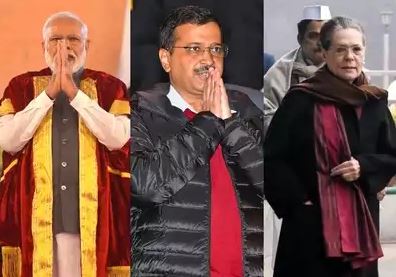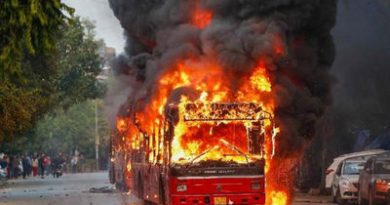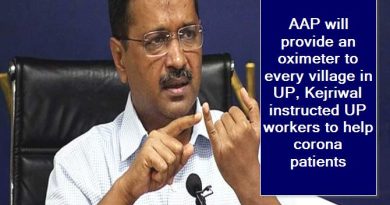Top factors that will determine who wins Delhi Assembly election
If Delhi were a country, it would be three times richer than India both on the per capita GDP and per capita income. Among all 33 states and Union Territories, Delhi ranks second only after Goa in generating per capita product and income. This explains why development as an election plank does not sell in Delhi Assembly polls scheduled for February 8.
Delhi Assembly election is a closely contested three-dimensional political battle. The ruling Aam Aadmi Party (AAP) of Arvind Kejriwal, the Delhi chief minister, has much at stake in the Delhi Assembly election for this is the only place where it is in power.
Stakes are high for the BJP as it has failed to make a comeback in Delhi since 1998. The Congress, which formed three consecutive governments in Delhi under late Sheila Dikshit, can practically claim victory if it dampens BJP’s chances of return to power in Delhi. Despite officially saying that it is contesting to come back to power, every Congress leader in Delhi knows that their claim is unrealistic given the ground strength.
Here are five factors that may determine the outcome of Delhi Assembly election whose results will be announced on February 11.
KEJRIWAL’S GOOD GOVERNANCE PLANK
In his public addresses, Arvind Kejriwal has told Delhi’s voters to vote for the AAP only if they are convinced his government has worked for them in the last five years.
Kejriwal believes he retains enough popularity with Delhi voters on account of free water, cheaper electricity, no hike in school fees and better-managed government hospitals to win Delhi Assembly election.
Surveys too indicate that Kejriwal is taking his AAP to power for the second time, but with reduced strength in Delhi Assembly. The AAP is officially aiming to win more than 67 (its 2015 tally) of 70 seats in Delhi Assembly election.
However, if one factors in the AAP’s performance in the Lok Sabha election, this target looks extremely ambitious. But then voters across India have shown different preferences in national and local elections.
If Kejriwal’s good governance plank works with the voters, the AAP may come back to power in spite of visible popularity of Prime Minister Narendra Modi among core BJP voters. Kejriwal seems to be wary of the Modi wave and has tried not to target the prime minister in person.
In many elections in the past, when Modi was made the subject of personal target, he has turned the scale in his favour. The BJP, though, is trying to project Delhi Assembly election as a battle between PM Modi and CM Kejriwal, the AAP leadership including the chief minister has stayed away from launching personal attacks on Modi.
MODI WAVE
Like 2014 Lok Sabha election, Delhi was in the grip of strong Modi wave in 2019 parliamentary polls. The BJP won all the seven Lok Sabha seats in Delhi in both elections. The BJP had, however, failed to capture power in 2013 and 2015 Delhi Assembly elections both held when Modi wave was generating groundswell in favour of the BJP.
In 2013, Modi as Gujarat chief minister and BJP’s prime ministerial candidate had addressed election rallies in Delhi. But when results were announced, the BJP was short of majority and decided to take high moral ground unlike recent examples seen in Goa, Karnataka, Haryana and Maharashtra and did not stake claim to form government. Kejriwal formed government in 2013 for 49 days.
In 2015, the BJP could win only three seats while the Congress was reduced to smithereens by Kejriwal juggernaut. On both occasions, the BJP had contested Delhi Assembly election with a declared chief ministerial candidate Harsh Vardhan in 2013 and Kiran Bedi in 2015.
The BJP losses in 2013 and 2015 were promptly tagged to Harsh Vardhan and Kiran Bedi. This time, the BJP has put its best foot forward by proclaiming that PM Modi is their face for Delhi election pitting him virtually against Kejriwal. The BJP hopes that Modi wave will drown Brand Kejriwal in Delhi.
ABILITY OF CONGRESS TO MAKE INROADS
The Congress is in tatters in Delhi. The district units of the party had been fighting openly till recently. The party has failed to enter into an alliance with the AAP that has noticeable support on the ground. The deal failed during the Lok Sabha election, which the AAP leadership suspected would be a cakewalk for the BJP and had approached Rahul Gandhi, then Congress president for a tie-up.
The Congress’s performance in Delhi in the Lok Sabha election is said to have surprised even some within the party hierarchy. The Congress finished second in five of seven constituencies pushing the AAP to distant third. But recent surveys show that people have clear preferences for Delhi Assembly election with no regards for the Lok Sabha election trend.
Still, the Congress is expected to do well in areas where anti-Citizenship Amendment Act (CAA) protests were intense. The visits by Congress leaders such as Salman Khurshid to protesters’ camps have generated lot of goodwill for the Congress particularly among Muslim voters, who are dominating voters in five constituencies and may influence electoral outcome on 5-10 other seats.
If the Congress actually makes inroads in such areas and manages to get some hold back in constituencies dominated by slums and unauthorised colonies, there may be a surprise in store in the upcoming Delhi Assembly election.
CASTE AND COMMUNITY SENTIMENTS
Delhi’s electorates are sharply divided among certain categories Purvanchalis, Punjabis, Muslims, upper caste-baniya combine and slums. They have traditionally been voters to one party or the other. The AAP broke this pattern in 2015.
The Congress was the biggest casualty of Kejriwal’s sudden rise in Delhi. While the BJP held on to its vote bank with 32 per cent vote share, the Congress suffered a loss of 15 per cent over 2013 election. The AAP got over 54 per cent.
The BJP depends on swing in Purvanchali vote, division among Punjabis and steadfast hold on upper caste-baniya combine. The Congress banks on slum voters, return of Purvanchalis and support of Muslim voters. The AAP hopes polarisation and caste-wise division of votes does not happen and the 2015 voting trend is repeated.
BIJLI-PAANI-SADAK: ISSUES OF PUBLIC CONCERN
The issues of public concern come last in Delhi polls. One major reason for this is the fact that the city has a huge majority of residents with roots outside the national capital. And, the rest of India is not as developed as Delhi. This makes development a less moving election issue in Delhi polls.
This also explains why parties have promised to keep electricity cheaper in Delhi. Availability of electricity is not a concern for an average Delhi voter unlike neighbouring Uttar Pradesh. Sheila Dikshit was at the receiving end just before 2013 Delhi election as there were talks about hike in power tariff in Delhi.
Water supply has been a concern in Delhi. But Kejriwal’s promise in 2015 and subsequent implementation of almost-free piped water in the past five years has made this issue irrelevant till a voter is not shocked by reports of climate change and impending water crisis all over the world including Delhi.
Traffic jam and pollution are two major worries for residents of Delhi. But the fact that Delhi roads are wider than those in other Indian cities puts the blame back on people who continue to buy cars without thinking about the consequences. The voters know this well.
Pollution may be a moving factor but only if a Delhi voter really believes in Delhi BJP president Manoj Tiwari’s claim that if voted to power the BJP government will solve pollution problem of the city in two years.




